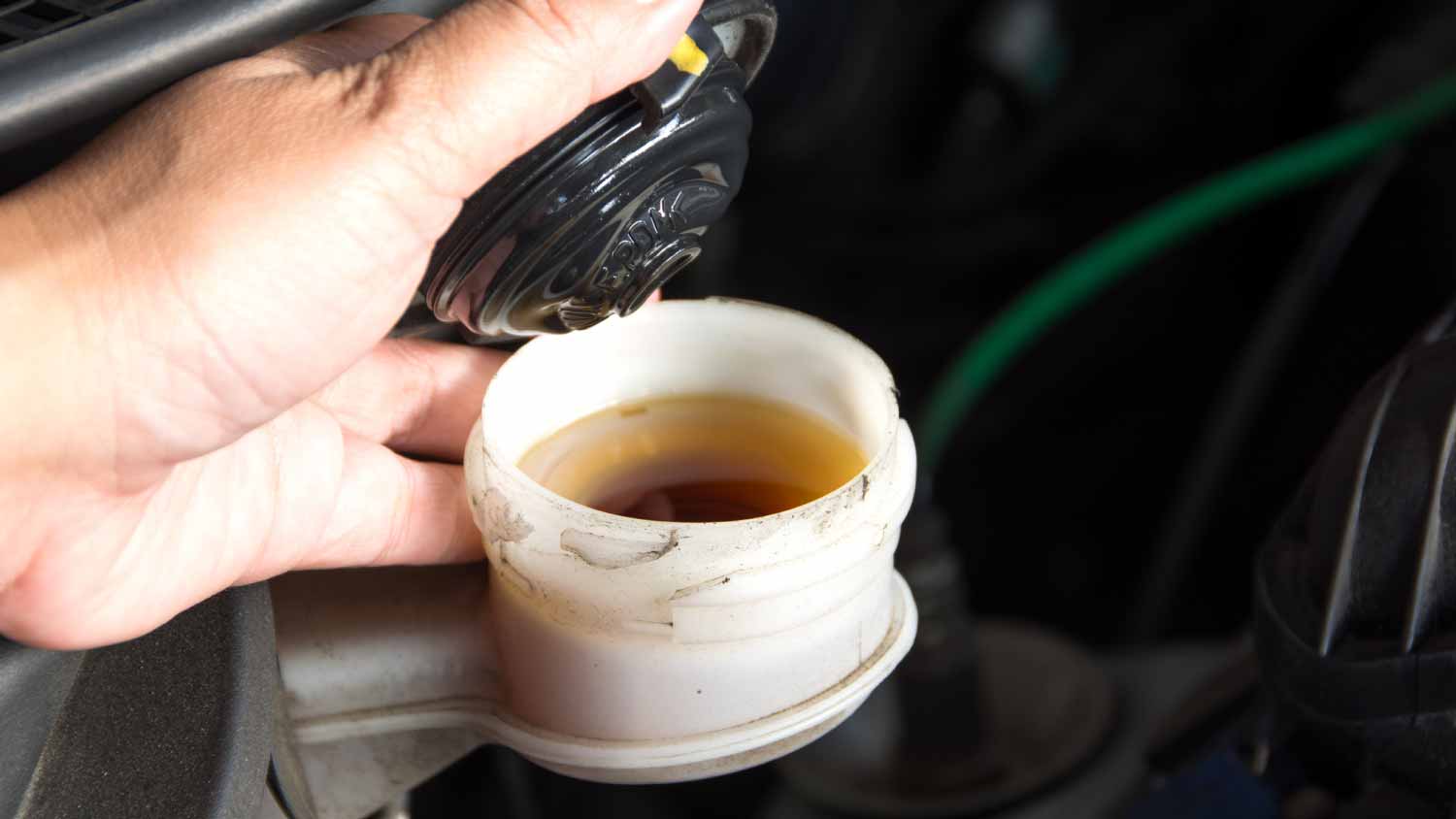How to Dispose of Used Motor Oil the Right Way
Have a hazardous waste disposal company pick up and dispose of used motor oil


- Oil drip pan
- Tarp
- Punch tool or other sharp implement
- Funnel
- Empty oil container
- Plastic bag
Doing your own oil changes at home can save you money, but it’s important to dispose of the used motor oil responsibly and legally. Because oil is considered a hazardous material, you’ll need to bring your used oil to a hazardous waste collection facility or other approved disposal facility.
Learn how to dispose of motor oil safely, legally, and without causing harm to your property or the environment.
Preparing to Dispose of Used Motor Oil

Motor oil is a hazardous material, so it’s important to follow safety precautions when handling it. Wear gloves to protect your hands and eye protection in case of spills and splatters. If oil gets on your skin, immediately wash the area thoroughly with a degreasing soap approved for use on the skin. Used motor oil can cause skin problems and other health risks, so handle it responsibly.
Collect the Oil
When you change your oil, collect the used oil in a drip pan. To protect your driveway or garage floor, lay a tarp down to catch any spills. Empty the used oil into your drip pan, making sure all oil is collected.
Drain the Filter
Once you’ve removed the oil filter, hold it over the drip pan and puncture it with a punch or other sharp tool to drain any remaining oil. The filter will still contain some oil even after it’s been drained, so it’ll need to be properly disposed of, too. Place the filter in a sealable plastic bag to transport it with the used oil.
Transfer the Oil
Next, transfer the oil from the drip pan to a sealable container. You’re going to be transporting the oil, so seal it as tightly as possible. Some drip pans come with fitted covers, so you can just cover the pan, and you’re ready to go. If your drip pan doesn’t have a cover, use a funnel to pour the oil into an approved container.
Your best bet is to use the original oil container, but if that’s not available, don’t just reach for any container you have on hand—you’ll need something made of polyethylene or another material that’s approved to hold oil. Don’t mix your oil with anything else, like gas or other fluids. Disposal facilities won’t accept it, and it could cause a dangerous reaction.
Bring to the Disposal Facility
It’s important to dispose of used oil at an approved hazardous waste disposal facility. Never dump oil down a drain or on the ground. According to the EPA, the oil from one oil change can contaminate one million gallons of water.
Make sure the oil container and oil filter are secure in your vehicle’s trunk. Spilled oil will stain and cause lingering smells in your car. Once they’re secure, drive to an approved facility.
Municipal Hazardous Waste Facility
Most municipalities have drop-off facilities where you can bring hazardous waste and have it disposed of legally and responsibly. Check online for the location and any guidelines you need to follow to be sure they’ll take your oil. Disposing of your used oil at a hazardous waste disposal facility is usually free or for a minimal fee.
Auto Parts Store or Auto Repair Shop
Various auto parts retailers offer oil recycling programs for free or a small fee. They collect used oil and then dispose of it in large batches. Retailers’ websites will indicate whether they have an oil recycling program and what steps you need to take.
Local auto repair shops and garages may also accept used oil. Call around to see if any shops in your area will take your oil and dispose of it.
DIY vs. Hiring a Pro to Dispose of Motor Oil
Most local garbage removal services prohibit putting hazardous waste like used oil in your curbside trash collection, but they may offer hazardous waste disposal services. Contact your municipal or private trash service to learn about their policies and what is considered hazardous waste.
Some junk removal companies may accept hazardous waste, but policies vary, so ask the company if they’ll take your used motor oil for disposal. If they accept hazardous materials, expect to pay an additional fee on top of the junk removal cost since it’ll need to be brought to a separate facility that may charge a fee.
If you have a large amount of old oil to dispose of, you may want to contact a disposal company that specializes in hazardous waste. Hazardous waste disposal costs vary, but most of these companies primarily service commercial customers and have minimum quantity limits, so unless you have too much oil to reasonably handle yourself, you’re better off bringing it to a facility yourself.
Frequently Asked Questions
Motor oil will degrade over time, making it unusable and potentially causing damage to your engine. The shelf life of motor oil is fairly long—about five years if stored properly in a sealed container in a cool, dry place. Check your bottle to see if there’s an expiration date and use your oil before that date.
Never pour used motor oil down the drain. Doing so can have serious environmental consequences, including contaminating groundwater, endangering animals, and killing vegetation. It can also clog your pipes, causing backups in your plumbing or the wastewater treatment plant. In most places, pouring motor oil down the drain is illegal, whether you do it in your home or a storm drain.
The best and safest way to deal with used motor oil is to bring it to an approved facility to be recycled and refined into new material. You may see recommendations to use old oil as an equipment lubricant or wood stain, but using it in these ways can be dangerous, messy, and environmentally irresponsible.















